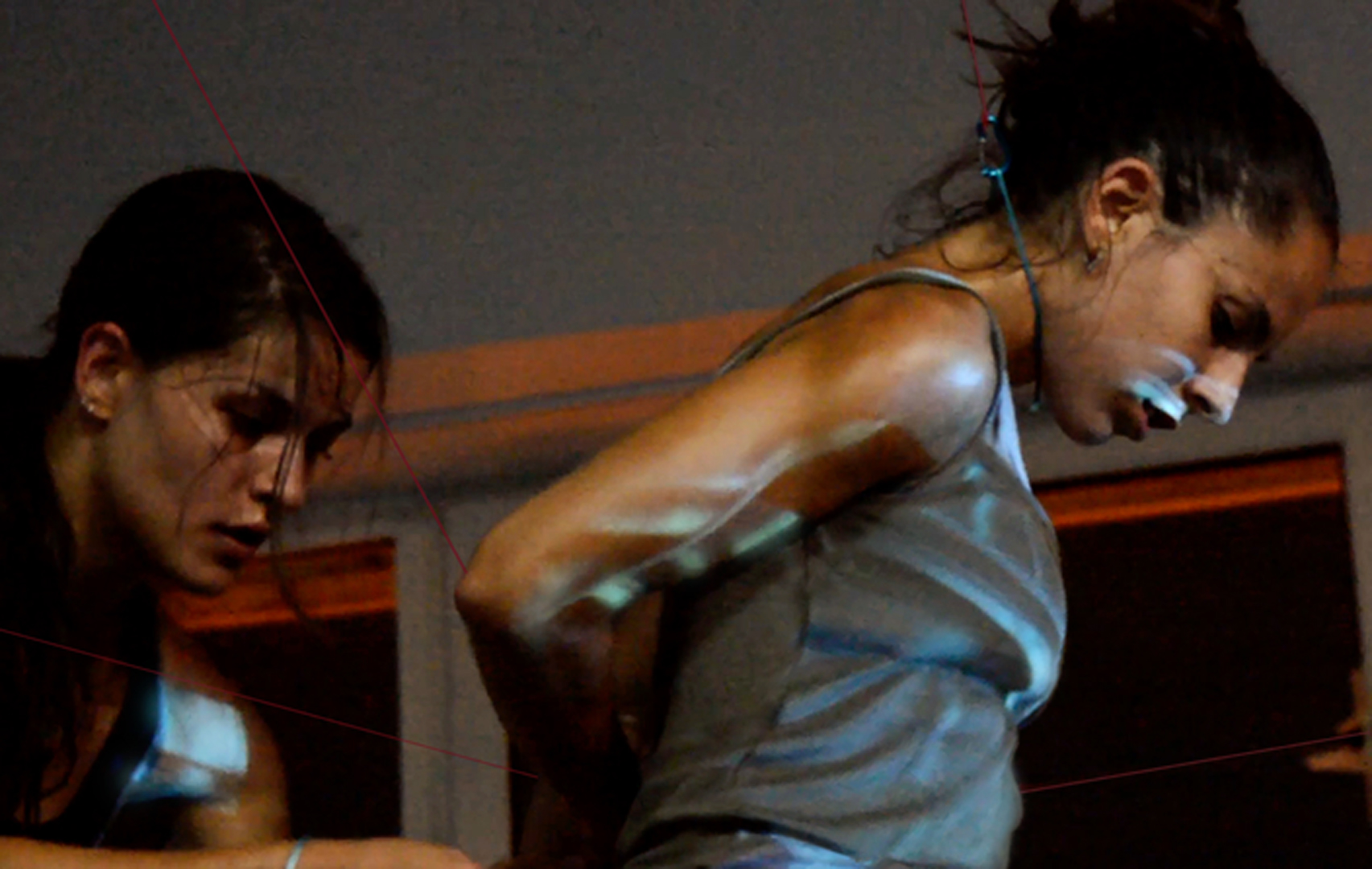Locus
Symposium:
- ISEA2016: 22nd International Symposium on Electronic Art
-
More presentations from ISEA2016:


Session Title:
- Dance
Presentation Title:
- Locus
Presenter(s):
Venue(s):
Abstract:
Interactive Audiovisual Dance
It seems like we are freed from so many tasks by computer technology but it makes us move in very limited ways in order to execute our commands successfully. Whichever kinds of controllers or sensors I used, they needed to be calibrated to adapt them to human movement. I felt we were put in a box (or I placed performers in a box) which could not be exceeded. Since there will always be a manual to use a controller, why not to focus on its readily ‘limited’ functions rather than seeking a higher and better technology?
Locus is a Latin word meaning ‘room’. I have been using the hacked game controllers, Gametrak [1], to let dancers to interact with my audiovisual work. In a previous experiment, I asked a dancer to connect the tethered controllers of Gametrak to her different parts of body. This condition naturally made her repeat the same movement to check how far she could move or not. This idea was discarded, because it made the dancer difficult to move freely. However, this repeated movement, which looks somewhat like physical stuttering as an error, inspired me to create an audiovisual piece which works with failure. Katerina Foti and Natasha Pantermali devised choreography for Locus under these physically constrained conditions. Over time one dancer is completely entangled to limit her physically, unable to control the piece, struggling to finish her routine.
Because this Gametrak’s tethered controllers directly affect on movement creation, I have researched on contemporary dance choreographic approaches and methods. My main influences are William Forsythe’s “choreographic objects” idea and Wayne McGregor’s physical problem solving tasks. [2] Both choreographers ask dancers to form ‘mental images’ which the dancers need to decide how to move in response for that imagery. They set physical ‘limitations’ to seek innovative movement rather than freely improvising. I have been trying to use digital technology not only to create interactive audiovisual elements but to create a common task for choreographers and I. Gametrak has been used as tangible and visible obstruction which to be solved by choreographers and I. Locus is the first performance created from this research and I have been developing this idea further to create other works.
Choreographers: Katerina Foti and Natasha Pandermali
Notes
- The Gametrak controller was invented in 2000 by Elliott Myers who founded In2Games and designed for home video game platforms. A standard potentiometer turns as the wire attached to the base console is pulled in and out and the analogue information of distance and location transforms to digital data.
- Jonathan’Owen’Clark’and’Taku’Ando, “Geometry, Embodied Cognition and Choreographic Praxis,” International Journal of Performance Arts and Digital Media, Vol. 10, No. 02, (2014): 179-192.





